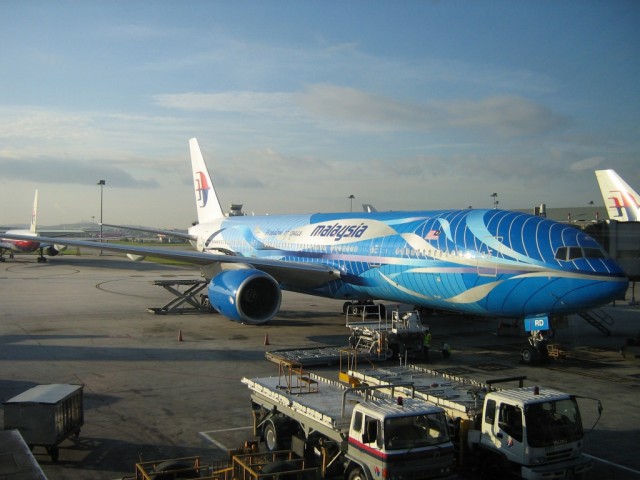Lesson Outline
March 18, 2014
News Literacy Lesson 8: Truth and Verification
In this lesson, we explore the concept of the process of verification and where that process may break down when there is a a lack of information available regarding a big news story. As you move through the lesson, ask yourself and your students at what points they may need to be more skeptical of the information being broadcast through each of the news outlets featured below. You may also want to lead students through V.I.A. with each of the sources you choose.
Summary
At 1:30 a.m. on March 8, 2014, a plane carrying 239 people dropped off air traffic control screens less than an hour into a flight from Kuala Lumpur, Malaysia to Beijing, China. What happened next became the most baffling mystery in the history of aviation.
Although the primary scenarios included a possible hijacking, action by a rogue crew, or catastrophic mechanical failure, no one really knew anything. But the complete lack of verifiable information about the plane’s disappearance – the factual void at the center of the story -- did nothing to prevent the world’s media from offering a wide range of reasons for the plane’s disappearance. “We can't just report that Flight MH370 crashed and we don’t know where or why yet,” Martin Robbins observed on Vice.com. “Instead, we have to be able to relay the plot of exactly what happened, using whatever scraps of information we can find.”
So what did happen –at least according to media reports?
- Was it terrorism –of the anti-Western, anti-Chinese, or just generally Islamic type? Although no one knew, soon a terrorism narrative was built around the disaster “on the basis of basically zero evidence whatsoever.”
http://www.telegraph.co.uk/news/worldnews/asia/malaysia/10685413/Malaysia-Airlines-crash-terror-fears-over-stolen-passports-used-on-missing-plane-MH370.html - Had the Malaysian military mistakenly shot down the plane after it abruptly changed course, then covered up after realizing their mistake?
http://www.nytimes.com/2014/03/13/world/asia/online-and-onscreen-disappeared-malaysian-flight-draws-intense-speculation.html
- Was it a form of psychological warfare by the United States to “sabotage the relationship between Iran and China and Southeast Asia?”
http://www.nytimes.com/2014/03/13/world/asia/online-and-onscreen-disappeared-malaysian-flight-draws-intense-speculation.html
- Did Chinese satellite images published on a Chinese government website show debris from the flight? Or did the satellite images not show anything connected with the event? And were they in fact released by mistake?
http://www.nytimes.com/aponline/2014/03/12/world/asia/ap-as-malaysia-plane.html - Were 20 employees from a high-tech firm lost on the flight engaged in some kind of electronic warfare experiment that involved ‘cloaking’ technology?
- Was an even darker and more mysterious force at work -- something entirely new and so powerful it can “can pluck airplanes out of the sky without leaving behind even a shred of evidence -- a fearsome military weapon with such capabilities that whoever controls it already has the ability to dominate all of Earth's nations?”
http://www.naturalnews.com/044244_malaysia_airlines_flight_370_vanished.html
- Or was the plane diverted with the intention of using it later for another purpose – a notion that, according to the Wall Street Journal, U.S. counterterrorism officials were “actively pursuing?”
http://www.businessinsider.com/update-on-missing-malaysia-flight-2014-3
- Did data from the plane’s engines show the plane stayed in the air for about four hours after it reached its last confirmed location?
- Or had "an analysis of signals sent through the plane’s satellite-communication link” revealed this instead?
http://online.wsj.com/news/articles/SB10001424052702304914904579434653903086282?mg=reno64-wsj
How could a concerned news consumer find credible, verified information about the missing plane, when everyone from sprawling mainstream media organizations with 24-hour news channels to lonely livebloggers and internet conspiracy theorists struggled to feed a global audience “with the meagre rations available…until every last drop of flavour has been extracted?” After all, there was just as little evidence for a terrorist attack as for a missile strike; for conspiracy theorists, it was either the US government or the New World Order; for the Daily Mail and Fox News, it was Muslim extremists with scary-sounding names. When the facts ran out, you could always rely “on the efforts of experts-cum story-tellers, spinning yarns from the thinnest and most fragile of evidence.”
Questions:
- Are there any facts that have been ignored or buried in the avalanche of speculation about the missing airliner?
- For all the supposed increases in airline security in the wake of 9/11, why are checks at airports so bad that people with stolen passports can apparently travel at will? Why has there not been more reporting on this issue?
- Why is it that in an era of high speed broadband, when even 40-year-old technology can transmit data back from beyond the edge of the solar system, we still have to send ships and divers to retrieve data from a plane, rather than simply transmitting it in real time? Why has there not been more reporting on this issue?
- Do invisible Muslim militant groups or government laser beams seem more interesting to news consumers than such basic safety issues? If so, why?
-
0 comments
-
1 save
-
Share

